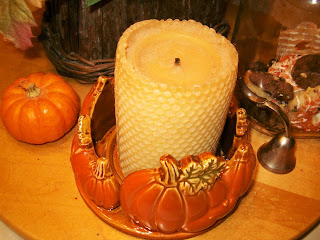
Does your pet spend more time sleeping than she used to? Have you noticed her muzzle has turned gray or white? Does she move slowly or doesn't always hear you when you approach?
Pets age faster than people do and have much shorter life spans. Their health becomes more fragile and their bodies get more susceptible to injury. There are natural ways to strengthen our pets to prevent old age illnesses.
Feed them naturally. Chemical additives in many commercial foods speed up aging by causing the body to produce more waste products. This can strain the kidneys, liver and other organs. Natural foods are easier to digest and produce fewer wastes. You can make your own foods -
Dr. Pitcairn's Complete Guide to Natural Health for Dogs & Cats has many recipes and ideas for home made diets. Check online or in other books for more. Or you can buy higher quality all- natural pet food available in health food stores and pet supply stores. Brands such as Solid Gold, Innova, Wysong, California Natural, and Wellness are a few I use. I also add a vitamin B complex or nutritional yeast and vitamin E to their diets.
Decrease servings. Older pets exercise less and burn fewer calories. This means they put on weight easier and that can strain their muscles and joints. Just feed the a little less if they seem to be putting on belly weight. Talk to your vet about the right amount.
Give a digestive aid. In nature cats and dogs ate the internal organs of their prey and with that were helpful digestive enzymes. Without these enzymes, pets are unable to unlock the full benefits of their food. I give my cats pet digestive enzymes and probiotics to keep their intestinal flora at the maximum.
Herbal help. Some herbs can help in the aging process. Hawthorne is a general circulatory system cleanser that helps the heart, balances blood pressure and is gentle protection from stress. It may be used daily long term. I give it to my pets with heart issues. The best nutrient is alfalfa - it detoxifies and is helpful for arthritic joints, hip and bone problems. Dandelion cleanses the liver. Wheat germ oil daily helps stop urine dribbling in older female dogs.
Protect their joints. Over time the cartilage in pet's joints begins to break down, causing pain and stiffness. Holistic veterinarians have found supplements containing glucosamine or a combination of glucosamine and chondroitin sulfate, like Cosequin, can help damaged cartilage and keep it strong in the future. Check with your vet before doing this if your pet may have liver disease or clotting disorders.
Keep them moving. Regular exercise is more important when pets age. It helps keep joints working smoothly because it pumps in lubricating fluids. Exercise also strengthens the immune system and releases endorphins, natural chemicals that help relieve pain. Play with them twice a day for 20 minutes or take them for walks. Swimming is also one of the best exercises for dogs because it supports their weight and prevents strain on their muscles and joints.
Spend time petting and grooming. Petted and loved pets live longer because they are emotionally happy and touch keeps the body healthy. Gentle petting and massaging can increase circulation to muscles and decrease spasms. Groom them daily in short five to ten minute sessions. Make sure you are calm and relaxed when you do this - it makes for a happier grooming session.
Provide extra comfort and warmth. Older pets appreciate a soft warm place to rest. An old blanket on the floor or foam pillows near a heat source or in a sunny spot will do. You can buy heated pet bed made especially for older pets.
Raise your voice. When pets age, the tiny bones inside their ears that amplify sound tend to lose their mobility and become less sensitive. That is whey your pet seems to be ignoring you or is startled when you come up from behind. Make sure you get their attention by blowing on them or stamping your foot before touching them. Talk louder to them so they can hear you better.
Boost them up. If they are having trouble getting up on their favorite chair or window perch, put a low stool or platform to help them get up. Older pets can get depressed when they can't do the things they used to be able to do.
A little extra care now can help them live longer and more comfortably. They give us so much, why not do a little more for them in old age?







.jpg)




























